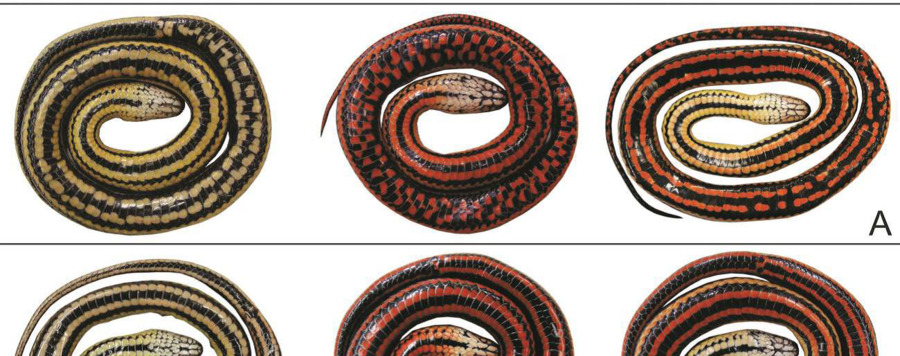
Attributes of the population structure and ventral polychromatism of Helicops infrataeniatus Jan, 1865 (Serpentes, Colubridae, Dipsadinae) in subtropical Brazil
Many ecological questions can be answered only with data from hundreds or even thousands of individuals. In some taxonomic groups, such as snakes, the availability of those data is rare due to low population densities and/or the difficulties in collecting them. Hence, studies on the population structure of snakes are still relatively scarce compared to other zoological groups. In this study, we had the opportunity to analyze the population structure from an unusually large sample of the Pampean water snake Helicops infrataeniatus. The specimens were collected through a flood event caused by excessive rainfall related to an El Niño period in southern Brazil. Although H. infrataeniatus is a common species in the study area, no ecological data regarding its population structure are available so far. Therefore, the main goals of this study were to (1) determine sex ratios, (2) test for sexual dimorphism, and (3) identify the ventral polymorphism in this population. We analyzed 672 individuals (46.4% females, 53.6% males; 50.2% were classified as adults, 48.6% juveniles, and 1.3% hatchlings). The total body length (ToL) ranged from 18.4–77.4 cm for females, and 19.7–67.0 cm for males, tail length (TaL) was 4.5–21.9 cm and 5.8–21.5 cm; sub-caudal scales were 55–73, 74–92, and weight was 2.2–191.0 g, 2.3–93.3 g. Highly significant differences were detected in the number of sub-caudal scales and the TaL:ToL ratios between females vs. males tested via analysis of covariance (ANCOVA), suggesting the presence of sexual dimorphism. Regarding the ventral spotting patterns, 38.0% of individuals had trilinear, 36.0% – intermediate, and 26.0% – checkered color patterns. Besides this, 63.0% of the individuals had a reddish ventral coloration, 25.0% – yellowish, and 12.0% – both colors. No correlation was found between ventral polymorphism and sex or age class. The results presented herein offer the first robust snapshot of the population structure of H. infrataeniatus.






